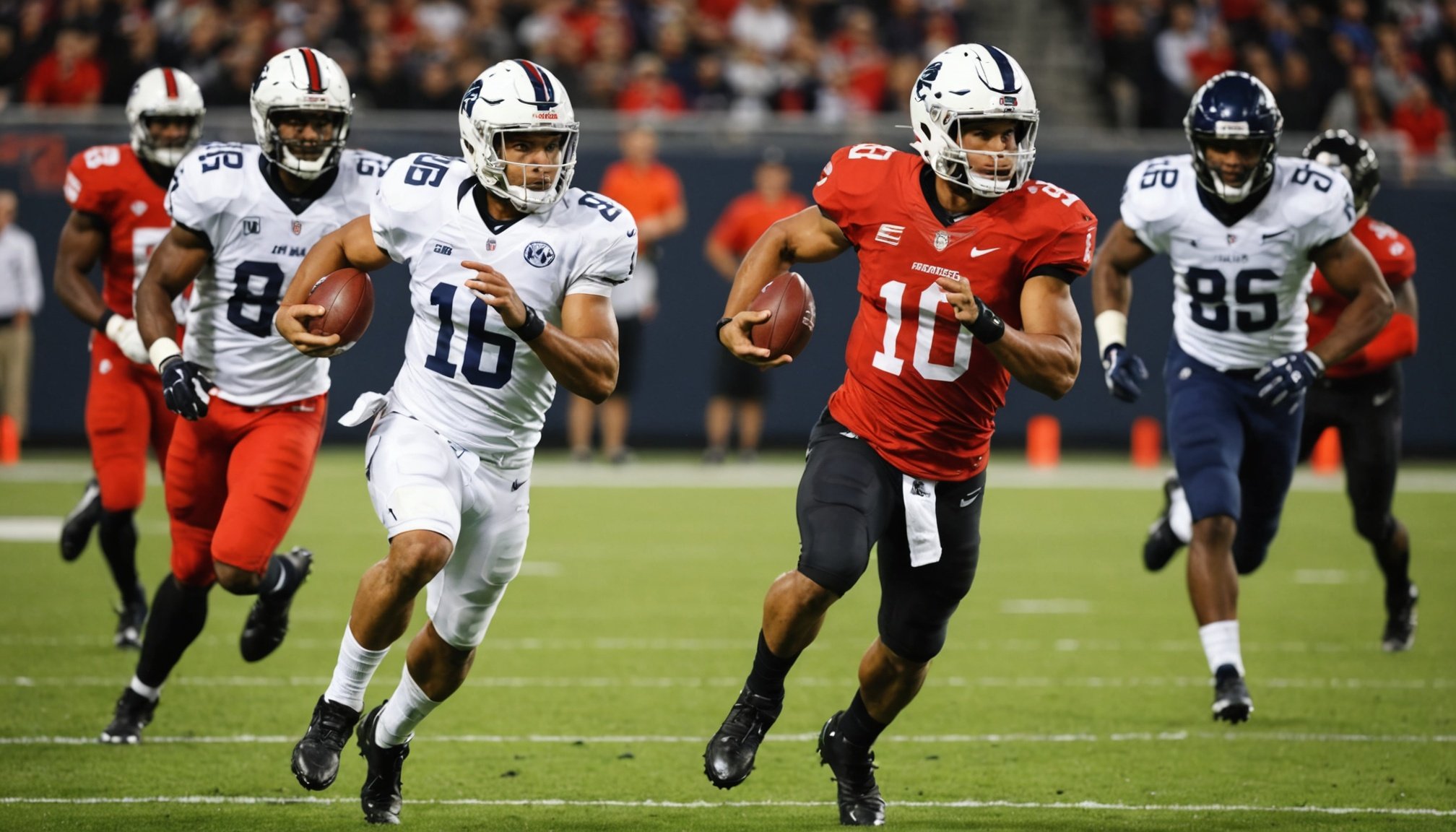Understanding Biofeedback in Sports
Biofeedback techniques are revolutionising sports science by enabling athletes to enhance their physiological performance. At its core, biofeedback refers to the process of using real-time data on physiological functions—such as heart rate, muscle tension, and temperature—to gain control over these usually involuntary processes. By being consciously aware of these metrics, athletes can tune their training regimes, thus improving outcomes significantly.
Historically, the concept of biofeedback emerged in the late 1960s, initially gaining traction in clinical settings to help patients manage stress. Over time, its application in sports science became evident as practitioners recognised its potential for enhancing physiological performance. This integration has facilitated targeted training strategies and optimized recovery periods, leading to notable performance improvements.
Additional reading : Navigating the change: key strategies for seamlessly transitioning from football player to referee
Modern biofeedback systems utilize a range of physiological metrics. For example, heart rate variability provides insights into an athlete’s stress and recovery levels. Muscle tension feedback assists in identifying areas prone to injury, allowing for preventative strategies. Furthermore, neurofeedback, a subset of biofeedback, enables athletes to achieve ideal mental states for performance and resilience under pressure.
By leveraging these techniques, athletes and coaches can make informed decisions, pushing boundaries in both training and competition. Understanding the science behind these metrics is key to unlocking an athlete’s full potential.
Also read : Impact of regulatory changes on football coaching techniques throughout the uk: a deep dive
Application of Biofeedback in Football
Biofeedback has become a vital tool in enhancing football performance by providing valuable real-time data during training and games. This data allows coaches and players to monitor physiological patterns such as heart rate, muscle tension, and respiration, helping to optimize training regimens for peak performance. By observing these metrics, teams can adjust strategies and techniques instantaneously, offering a competitive edge.
Several case studies highlight the successful integration of biofeedback in football. For instance, a renowned European club implemented the use of biofeedback tools and observed a marked improvement in their players’ performance metrics. Players became more aware of their physiological limits, allowing them to enhance endurance and focus during matches.
The technological tools facilitating sports performance enhancement include advanced wearables like heart rate monitors and electromyography (EMG) sensors. These devices capture data seamlessly and are often integrated with software platforms that analyze and present the data in an accessible format for players and coaches.
By embracing practical applications of biofeedback, teams not only improve individual and collective performance but also minimize injury risks and optimize recovery periods. The data-driven approach ensures training is both efficient and effective, paving the way for achieving excellence in football.
Benefits of Biofeedback for Physiological Performance
Biofeedback offers numerous physiological benefits that can enhance an athlete’s overall performance. One of the primary advantages is its impact on stress reduction and the promotion of relaxation techniques. This is crucial for athletes who need to maintain a low-stress level to perform optimally. Biofeedback teaches athletes how to regulate their physiological responses, which can lead to improved mental states and physical resilience.
During high-pressure situations, maintaining focus and concentration is essential. Biofeedback helps in enhancing focus by providing real-time data that encourages athletes to adjust their mental and physical responses. As athletes learn to control their breathing, heart rate, and muscle tension, they build better concentration skills, essential for success during competitions.
Moreover, biofeedback aids in the improvement of recovery times and plays a significant role in injury prevention. By understanding their body’s signals, athletes can modify their training and recovery strategies to prevent overuse injuries and expedite healing. This involves recognising when their bodies require rest and when it’s safe to push forward, ultimately leading to performance improvement. As a result, integrating biofeedback into training regimens can significantly enhance an athlete’s recovery and overall athletic capability.
Practical Strategies for Implementing Biofeedback
Biofeedback can revolutionise sports training methods, offering unique insights into athletes’ physiological responses. Integrating biofeedback into athlete coaching requires a structured approach.
Start by evaluating the specific needs of the athletes. Identifying the physiological aspects to monitor, like heart rate variability or muscle tension, is crucial for performance optimization. Coaches should select biofeedback systems tailored to these needs. Once a device is chosen, ensure that athletes understand how to use the technology. Familiar training sessions can aid in achieving accurate readings and relevant feedback.
Step-by-step Integration for Coaches
- Assessment and Goal Setting: Determine individual athlete’s needs and establish clear objectives.
- Device Selection: Choose reliable biofeedback tools, focusing on ease of use and data accuracy.
- Education and Training: Educate athletes on interpreting the data effectively.
- Integration and Monitoring: Gradually incorporate biofeedback into routine exercises, continuously monitoring progress.
Best Practices for Athletes
Athletes should start with simple exercises, paying attention to their body’s responses. Over time, they can adjust strategies based on the feedback. Specific tools, like heart rate monitors or wearable sensors, can provide the necessary data to optimise performance efficiently. The key is consistent practice and interpretation of biofeedback data for tangible improvements.
Research Findings and Case Studies
Biofeedback has become a significant focus within evidence-based practices for improving athletic performance. Several key research studies highlight its potential benefits. These studies often demonstrate notable statistical improvements in athletes incorporating biofeedback techniques into their training regimes. For instance, some research indicates enhanced muscle control and reduced anxiety levels, which directly correlate to performance metrics such as reaction time and precision in movements.
Athletic case studies often record specific improvements in physiological markers, like heart rate variability and muscle tension, when biofeedback is consistently employed. Athletes using these techniques generally report feeling more in tune with their bodies, leading to better performance outcomes.
Despite the promising findings, there are limitations. Not all studies yield consistent results, suggesting that the effectiveness of biofeedback can vary based on the individual’s condition or the sport involved. Furthermore, the field of biofeedback research in sports could benefit from standardized methodologies and expanded sample sizes to strengthen the evidence base.
Future directions may involve technological advancements in biofeedback devices, making them more accessible and tailored for specific sports applications. Exploring the integration of biofeedback with other training modalities may also uncover comprehensive strategies for athlete optimization.
Future of Biofeedback in Football
In the realm of football, emerging technologies are becoming increasingly pivotal. Innovations in biofeedback technology are set to revolutionise how athletes train and perform. Combining data analytics with biofeedback provides insights into an athlete’s physiology, potentially propelling the sport to new performance heights.
The integration of biofeedback in football is not just a passing trend but represents a significant shift in performance trends. Teams are now adopting these technologies to understand player health and optimise performance. Through intricate data analysis, coaches can make informed decisions in real-time, enhancing strategic planning.
As future advancements unfold, the role of biofeedback in team sports is expected to expand exponentially. Predictive analytics will allow for a more granular understanding of each athlete’s potential, permitting tailored training regimens. This personalisation enhances not only player performance but also overall team dynamics.
A particular standout is the potential for personalized coaching. Advanced biofeedback systems can identify an athlete’s specific needs, facilitating bespoke training approaches. As technology continues to evolve, the collaborative effort between coaches and technology experts will only intensify, making football more dynamic and scientifically informed. Embracing these changes is essential for teams aspiring to lead the future of football.











